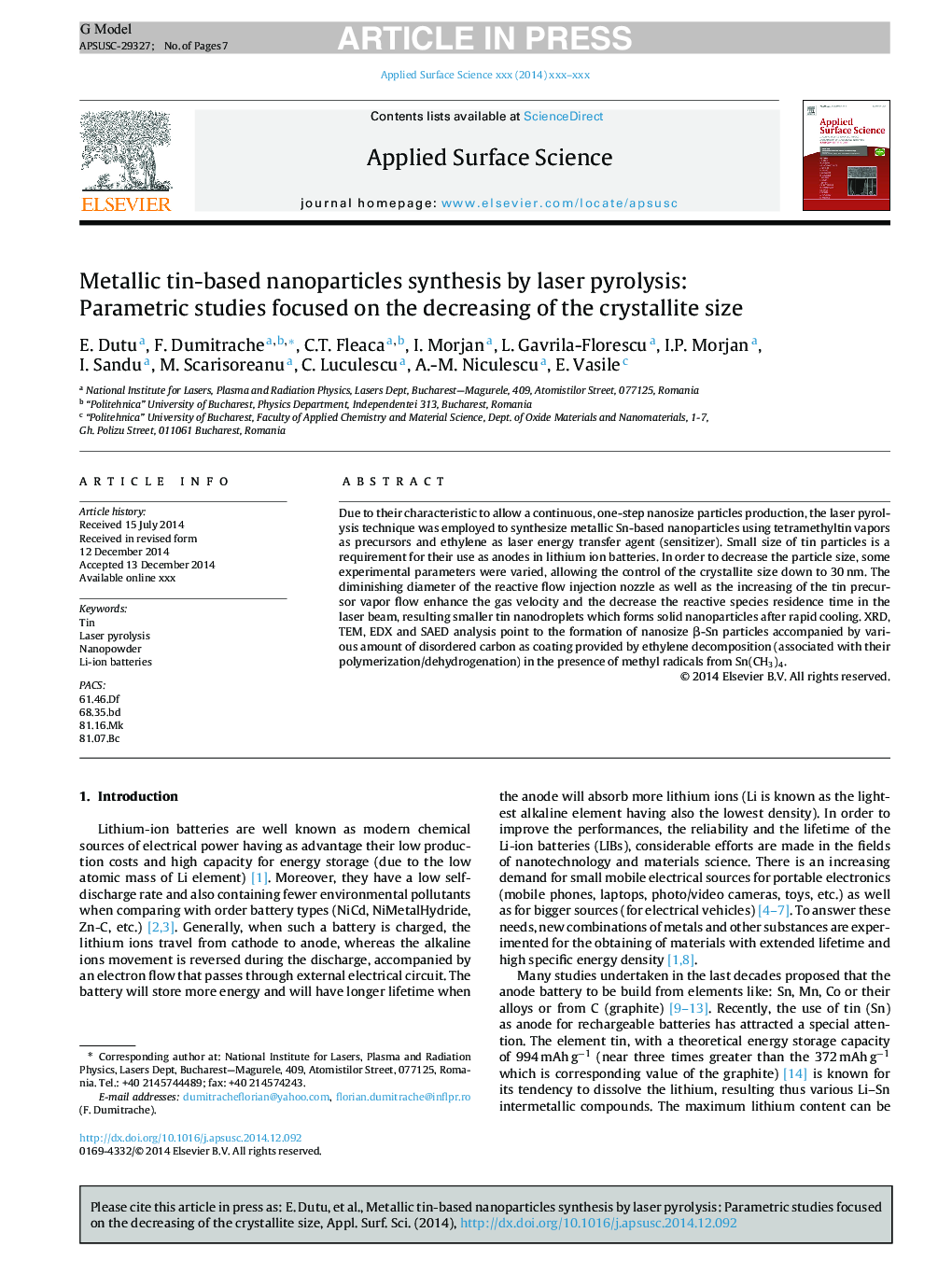| Article ID | Journal | Published Year | Pages | File Type |
|---|---|---|---|---|
| 5358575 | Applied Surface Science | 2015 | 7 Pages |
Abstract
Due to their characteristic to allow a continuous, one-step nanosize particles production, the laser pyrolysis technique was employed to synthesize metallic Sn-based nanoparticles using tetramethyltin vapors as precursors and ethylene as laser energy transfer agent (sensitizer). Small size of tin particles is a requirement for their use as anodes in lithium ion batteries. In order to decrease the particle size, some experimental parameters were varied, allowing the control of the crystallite size down to 30 nm. The diminishing diameter of the reactive flow injection nozzle as well as the increasing of the tin precursor vapor flow enhance the gas velocity and the decrease the reactive species residence time in the laser beam, resulting smaller tin nanodroplets which forms solid nanoparticles after rapid cooling. XRD, TEM, EDX and SAED analysis point to the formation of nanosize β-Sn particles accompanied by various amount of disordered carbon as coating provided by ethylene decomposition (associated with their polymerization/dehydrogenation) in the presence of methyl radicals from Sn(CH3)4.
Related Topics
Physical Sciences and Engineering
Chemistry
Physical and Theoretical Chemistry
Authors
E. Dutu, F. Dumitrache, C.T. Fleaca, I. Morjan, L. Gavrila-Florescu, I.P. Morjan, I. Sandu, M. Scarisoreanu, C. Luculescu, A.-M. Niculescu, E. Vasile,
